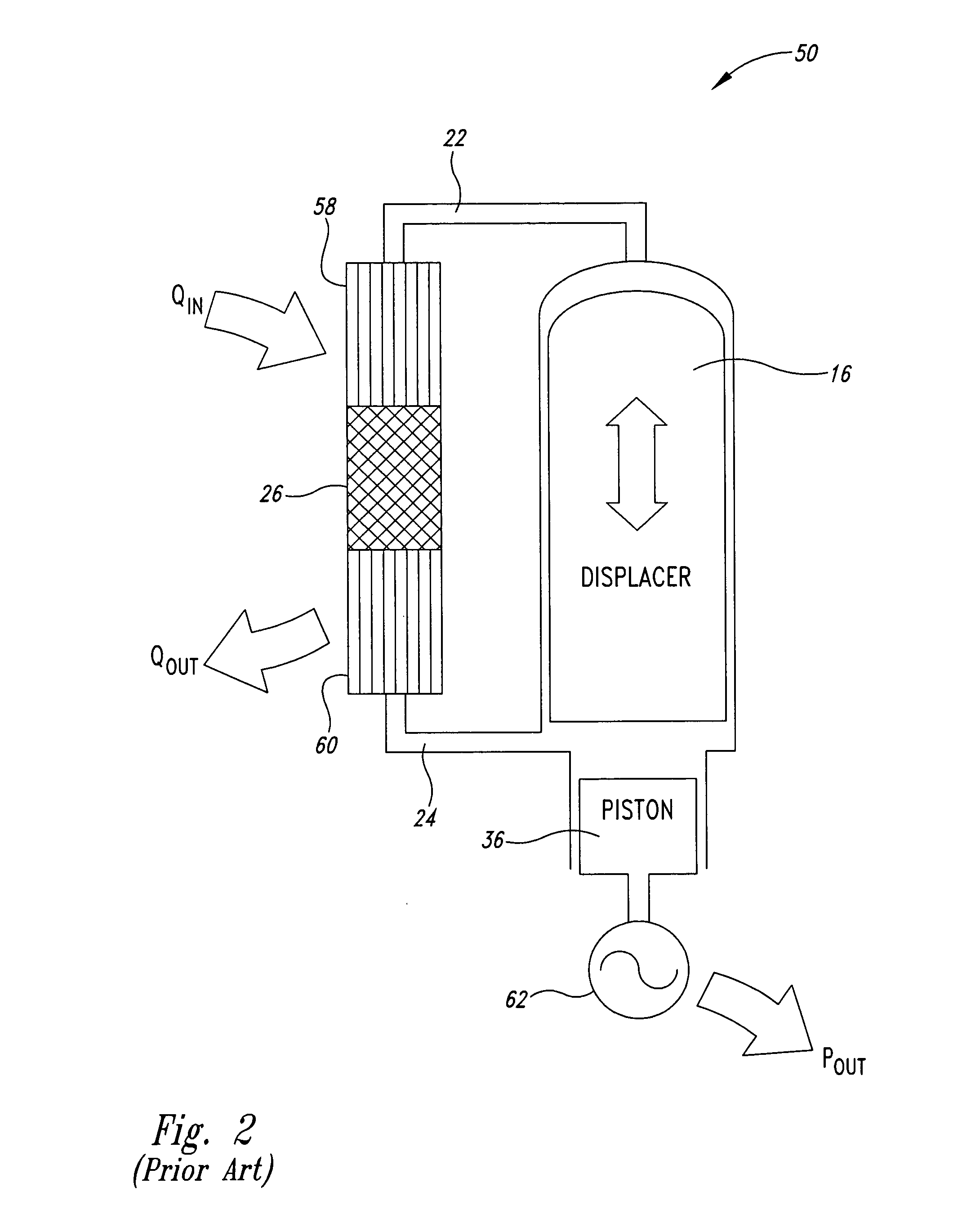Channelized stratified regenerator system and method
a stratified and regenerator technology, applied in the field of engine and coolers, can solve the problems of reducing long-term reliability, requiring extensive highly trained labor for the manufacture of conventional regenerators, and reducing the reliability of conventional regenerators
- Summary
- Abstract
- Description
- Claims
- Application Information
AI Technical Summary
Benefits of technology
Problems solved by technology
Method used
Image
Examples
Embodiment Construction
[0058] As will be discussed in greater detail herein, a channelized stratified regenerator with integrated heat exchangers system and method are disclosed using micromachining to precisely construct structural geometries and axial stratification of material. In operation, a working fluid passes through the regenerator when traveling between two heat exchangers. A first one of the two heat exchangers transfers heat from a heat source to the working fluid and a second one of the two heat exchangers transfers heat from the working fluid to a heat sink. With a Stirling cycle engine, the heat source can include chemical combustion, nuclear, solar, and other energy sources. Another heat exchanger can also be used to transfer heat from the energy source to the first heat exchanger. With a Stirling cycle cooler, a heat source is a room, device, or something else intended to be cooled. In some implementations, the heat sink can be another heat exchanger containing a coolant to carry heat off...
PUM
 Login to View More
Login to View More Abstract
Description
Claims
Application Information
 Login to View More
Login to View More - R&D
- Intellectual Property
- Life Sciences
- Materials
- Tech Scout
- Unparalleled Data Quality
- Higher Quality Content
- 60% Fewer Hallucinations
Browse by: Latest US Patents, China's latest patents, Technical Efficacy Thesaurus, Application Domain, Technology Topic, Popular Technical Reports.
© 2025 PatSnap. All rights reserved.Legal|Privacy policy|Modern Slavery Act Transparency Statement|Sitemap|About US| Contact US: help@patsnap.com



